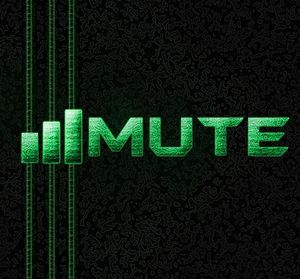By Dr. Ken Broda Bahm:
We know communication is visual and not just verbal. But when litigators think of that, they tend to think of demonstrative exhibits and technology. But what about themselves? As a speaker, you’re making a visual impression as well. Most know the basics: stand up straight, look the jury or judge in the eye, use a few gestures. But in practice, attorneys want to expect that in court, content is king and what we say matters more than how we look when we say it. But some surprising research shows that more than we expect is coming through the visual channel.
The studies use the technique of asking research participants to assess a communicator without the aid of sound. Watching a music competition with the sound off, for example, (Tsay, 2013) both amateur and professional musicians were able to correctly predict the competition winners, and did so at a level that was better than those who heard and those who both heard and saw the performance. Similarly, experimental participants unfamiliar with the candidates were able to identify the election winner after simply watching ten-second silent video clips of a gubernatorial debate (Benjamin & Shapiro, 2009). As with the music competition research, turning the sound on tended to worsen the accuracy.
That raises a question not fully answered yet in either study: Exactly what are these research participants seeing? Speculating a bit on that answer, and about why the visual assessment would matter to that degree, this post takes a look at how these findings might apply to a litigator’s visual communication in court.
Yes, Confidence, But What Does That Look Like?
A short answer is that what the research participants are seeing in settings like the music competition or the political debates is confidence. That feeling of being on target and doing well is both a cause and an effect of success in court and other settings. Litigators certainly get that, but what does confidence look like? Referring back to the election and the music contest studies, it would be interesting to do follow-up research (using eye tracking or interviews, for example) to try and identify exactly what the participants are seeing that led to the more accurate assessments.
While I haven’t found that study yet, there is some other useful research with the potential for breaking down this notion of visual confidence. One example (Cesario & Higgins, 2008) focused on the notion of a “perceptual fit” between a speaker’s behavior and the expectations of the message recipients. Nonverbal behaviors are effective when they sustain the motivations or the message targets, or more simply, when they make an audience “feel right.” Drawing from this perspective and adding in some of my own thoughts, I want to look at a few dimensions that are likely to be better conveyed with the sound off. In that category, I think it helps to pay attention to three polarities that we read visually.
Eager or Reluctant?
Does the speaker want to be there or not? That dimension hearkens back to the President’s widely criticized performance in the first debate in the most recent election. It is also what the study mentioned above (Cesario & Higgins, 2008) focused on. When a speaker was focused on promoting a message, a more eager nonverbal style led to better persuasion. For a witness, that means sitting forward and literally leaning in to the question, as opposed to looking pushed back in your seat. For the speaker, it suggests a positive facial expression, a similar movement toward the audience, and potentially a moderately faster speaking rate as well.
Assertive or Defensive?
Is the speaker advancing their own case or trying to beat back an opponent? The latter advocate might wear furrowed brows and an expression of irritation, consternation, or anger. They may have gestures and movements that are restrictive, close to the body, and metaphorically protective like folded arms. The assertive speaker, however, will employ broad and open gestures that move away from the body. The perception from the face, the pace, and the posture, should be that speaker welcomes and even relishes the challenge.
Dynamic or Static?
Is the speaker moving or just standing there? Change is an important part of the delivery that not only maintains interest but also communicates power and confidence. The witness is of course usually locked down in a seat, yet can still convey some dynamism through moderate face and postural movement, as well as a few gestures, especially when used meaningfully to highlight a relationship or a process. For the attorney, the goal is to move about as much as the court allows you to. Even with the constraint of standing behind a lectern, it is still possible to change position from time to time, for example, standing off the corner of the lectern instead of directly behind it.
The list could go on of course. The most important message, however, is to simply be conscious of your visual impression. It can be a good exercise for spotting these traits: If you have a mock trial argument or a practice opening on video, spend a couple of minutes watching it with the sound turned off. Ask yourself, what would research participants determine about how I’m doing just from the visual picture alone?
______
Other Posts on Nonverbal Delivery:
- Remember in Court, If You’re in View, Then You’re on Stage
- Go Ahead and Talk with Your Hands, But Know What You’re Saying
- Look Like You’re Winning: 2012 Presidential Debate Series, Part One
______
Benjamin, D. J., & Shapiro, J. M. (2009). Thin-slice forecasts of gubernatorial elections. The review of economics and statistics, 91(3), 523-536.
Cesario, J., & Higgins, E. T. (2008). Making Message Recipients “Feel Right” How Nonverbal Cues Can Increase Persuasion. Psychological Science, 19(5), 415-420.
Tsay, C. J. (2013). Sight over sound in the judgment of music performance.Proceedings of the National Academy of Sciences.
